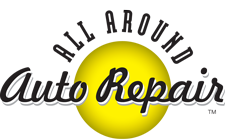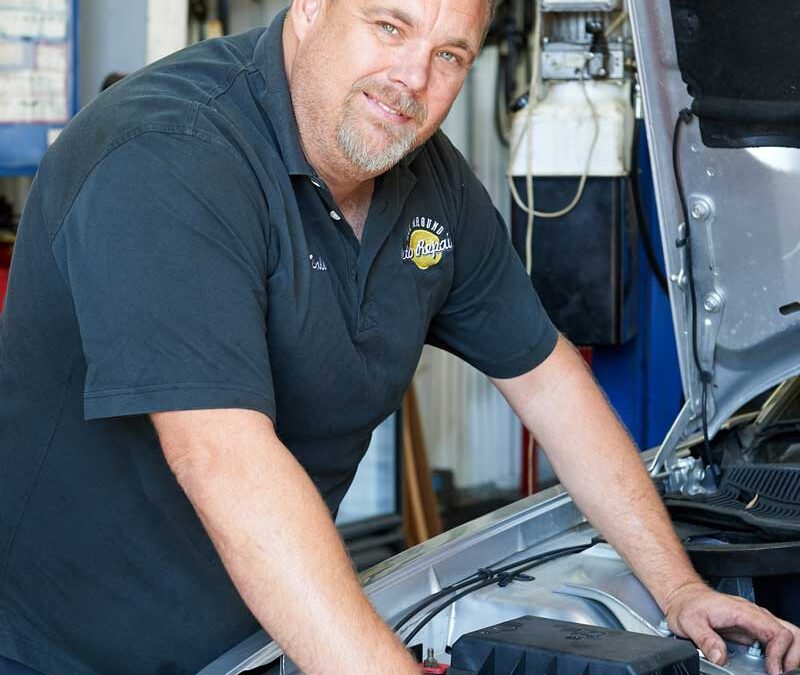This blog about Wheel Alignment was updated in February of 2024
Be honest – how often do you think about wheel alignment? Probably about as much as you think about the Orioles winning the World Series this year – not very much.
Certified Mechanics Have the Right Wheel Alignment Equipment
Diving into the world of wheel alignment with a bit more depth, we find ourselves at the intersection of high-tech equipment and skilled craftsmanship. Certified mechanics, like those at All Around Auto Repair, play a pivotal role in ensuring your vehicle not only meets but exceeds driving expectations. Here’s a more detailed look at how this process unfolds and why it’s crucial for your vehicle.
Equipped for Precision
The first thing to note is the importance of having certified mechanics handle your wheel alignment. These professionals are not just experts in understanding the theoretical aspects of wheel alignment; they are also trained in using the specialized equipment necessary for the task. This includes clamps that securely attach to the wheels, camera units that capture the current alignment from all angles, and LED arrays that provide precise measurements. This equipment ensures that adjustments are not just accurate but perfectly tailored to your vehicle’s specifications.
Understanding Wheel Alignment
Wheel alignment might sound straightforward—adjusting your vehicle’s wheel angles—but the devil is in the details. The process involves fine-tuning three critical angles: caster, camber, and toe. Each of these angles plays a significant role in how your vehicle handles and how evenly your tires wear over time.
- Caster is the angle of the steering axis when viewed from the side of the vehicle. This affects balance, steering, and stability.
- Camber is the tilt of the wheels towards or away from the car when viewed from the front. It influences tire grip and wear.
- Toe refers to how much the wheels turn inward or outward when viewed from above, affecting how straight your wheels roll.
Your Role in the Process
As a vehicle owner, your role in the wheel alignment process is surprisingly simple yet vital. By bringing your vehicle to a trusted center like All Around Auto Repair, you’re taking a proactive step towards ensuring its longevity and performance. The best part? You don’t need to get into the nitty-gritty of caster angles or camber adjustments. Your mechanic will handle all the technical aspects, providing you with a service that keeps your car running smoothly and efficiently.
Protecting Your Investing
Allocating just about an hour to wheel alignment can yield significant benefits for your vehicle. This process is not just about achieving a straight drive; it’s about preserving the intricate systems that keep your car moving. A precise wheel alignment ensures that your steering and suspension systems are spared from unnecessary stress and wear. This preservation is crucial, as these components are fundamental to your vehicle’s operational integrity and driving dynamics.
The Consequences of Neglect
The roads are not always kind, and every pothole or bump presents a test for your car’s resilience. Without regular wheel alignments, these encounters can lead to damage to your suspension, a core component responsible for a smooth and stable ride. Aligning your wheels according to the manufacturer’s specifications allows your car to absorb these impacts more efficiently. Of course, avoiding potholes where possible is always the best practice, but when they’re unavoidable, a well-aligned vehicle can handle them with grace.
Immediate and Long-Term Benefits
In the short term, the difference a wheel alignment makes to your driving experience is palpable. You’ll enjoy a smoother ride, free from the drift and pull caused by misaligned wheels. This not only makes your journey more pleasant but also safer, as it reduces the need to constantly adjust steering to keep the vehicle straight. Moreover, correct wheel alignment plays a role in optimizing fuel efficiency. When wheels are properly aligned, your vehicle faces less rolling resistance, which means it requires less energy (fuel) to move forward.
Newer Vehicles Might Need Wheel Alignment
Today’s vehicles are marvels of technology, equipped with systems designed to increase safety, efficiency, and comfort. Features like adaptive cruise control, lane departure warnings, and automatic emergency braking are no longer the stuff of science fiction; they’re a reality in many of today’s cars. However, the effectiveness of these advanced driver assistance systems hinges on the precise calibration of the vehicle’s mechanical components—starting with the wheel alignment.
When your wheels are properly aligned, it ensures that your vehicle’s ADAS can function as intended. The alignment affects how sensors and cameras perceive the vehicle’s position on the road. If the wheels are misaligned, it could lead to inaccurate readings, diminishing the reliability and effectiveness of these life-saving features.
Why Modern Vehicles Demand Precision
For newer vehicles, the stakes are even higher. Systems like anti-lock brakes and electronic stability control directly rely on the assumption that the vehicle’s wheels are correctly aligned. Misalignment can throw off the vehicle’s ability to correctly assess situations and respond appropriately, potentially compromising safety features designed to protect you and your passengers.
Moreover, the integration of ADAS with the vehicle’s navigation and control systems means that even a slight misalignment can lead to significant discrepancies in how the vehicle interprets and reacts to driving conditions. This is why many manufacturers now mandate that any mechanical adjustments, including wheel alignments, are followed by an electronic reset of the ADAS. This process ensures that all systems are in sync and operating based on accurate vehicle alignment.
The Role of Professional Service in Maintaining High-Tech Vehicles
Given the complexity and precision required, maintaining the alignment in modern vehicles is not just about mechanical expertise but also about understanding the intricacies of advanced automotive technologies. Professional mechanics equipped to handle these requirements are essential for ensuring that your vehicle’s ADAS operates correctly, providing the safety and convenience these systems are designed to offer.
This requirement underscores the evolution of vehicle maintenance from purely mechanical adjustments to a more integrated approach that combines mechanical know-how with technological savvy. It’s a testament to how far automotive technology has come and the increasing role of professional service in maintaining the safety, efficiency, and performance of modern vehicles.
Problems are Easy to Avoid
There’s an expression that an ounce of prevention is worth a pound of cure. That basically means that you should deal with a problem at the earliest possible time to avoid a bigger problem later, which might be difficult or impossible to affordably fix.
That’s definitely true with wheel alignment. The auto experts say that you should have your alignment checked at least once per year or every 10,000 miles of driving, whichever comes first.
The more that you drive, the more likely that your wheels will gradually become misaligned; and the more that your wheels become misaligned, the higher the chances that you’ll experience uneven wear and suspension issues.
You should really have your wheels aligned every time that you have your oil changed or get a tune up at All Around Auto Repair since wheel alignment only takes about an hour and protects your vehicle’s systems. Get started and schedule an appointment today.






